WARREN ZEVON: an assessment of credentials
WARREN ZEVON: an assessment of credentials
by Norman Warwick
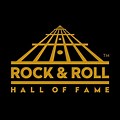
´The free encyclopedia´, The Rock and Roll Hall of Fame (RRHOF), is a museum and hall of fame located in downtown Cleveland, Ohio, United States, on the shore of Lake Erie. The museum documents the history of rock music and the artists, producers, engineers, and other notable figures who have influenced its development.
The Rock Hall has this month revealed its latest slate of nominees, including seven first-timers out of 16 total acts. Inductees will be announced in May ahead of the 36th Annual Rock & Roll Hall of Fame Induction Ceremony, to take place in Cleveland, Ohio, sometime this fall.
Foo Fighters, The Go-Go’s, Iron Maiden, JAY-Z, Mary J. Blige, Dionne Warwick, Fela Kuti and The Rock and Roll Hall of Fame all find themselves on the ballot for the first time, while Kate Bush (right), Devo, Chaka Khan, Carole King, LL Cool J, New York Dolls, Rage Against the Machine, Todd Rundgren and Tina Turner have all been here before.
Khan was twice-nominated before today, both solo and as a member of Rufus, while King and Turner stand to become the second and third women inducted twice, after Stevie Nicks became the first in 2019. Foo Fighters frontman Dave Grohl would be another double-inductee, as he already entered the Hall in 2014 as a member of Nirvana.
Foo Fighters and JAY-Z were both nominated in their first years of eligibility, meaning their first commercial recordings were released more than 25 years ago, while acts including D’Angelo, Garbage, Deftones, Backstreet Boys and Robyn entered their first years of eligibility in 2021, but were not nominated, as Pitchfork points out.
“This remarkable ballot reflects the diversity and depth of the artists and music the Rock & Roll Hall of Fame celebrates,” said John Sykes, Chairman of the Rock & Roll Hall of Fame Foundation, in a statement. “These nominees have left an indelible impact on the sonic landscape of the world and influenced countless artists that have followed them.”
2020 nominees included Pat Benatar, Dave Matthews Band, Judas Priest, Kraftwerk, MC5, Motörhead, Rufus featuring Chaka Khan, Todd Rundgren, Soundgarden and Thin Lizzy, with Whitney Houston, T. Rex, The Notorious B.I.G., Nine Inch Nails, The Doobie Brothers and Depeche Mode making the final cut as inductees.
The Hall’s 2021 inductees was chosen by “an international voting body of more than 1,000 artists, historians and members of the music industry.”

Mary J. Blige
Kate Bush (right)
Devo
Foo Fighters
The Go-Go’s
Iron Maiden
JAY-Z
Chaka Khan
Carole King
Fela Kuti
LL Cool J
New York Dolls
Rage Against the Machine
Todd Rundgren
Tina Turner
Dionne Warwick
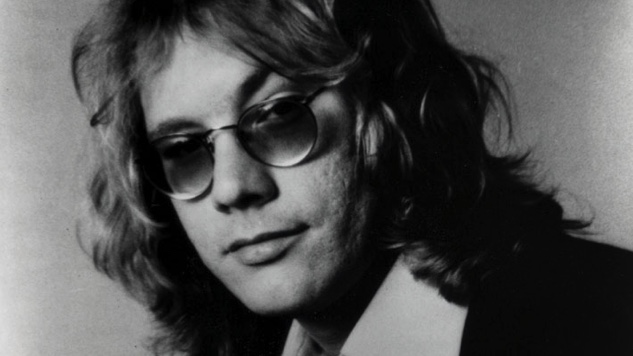
As the world returns to some normality this year, post covid, amidst monkey pox so, too, we have a return to a more recognisable hall of fame induction event. However, because we all have different tastes, and probably set different criteria for how to qualify for a hall of fame short-list, the content will always be controversial. Do we, the public, induct an artist for the overall quality of their body of work, for the quality of their career-highlight songs, or some subjective personal view of the artist´s impact on the world.
Should someone like the late Warren Zevon, (left) belong in the Rock & Roll Hall of Fame? I am a lover of his greatest, if least commercial hits, and I was thrilled to find him the first example I was aware of, who was seeing his song titles subsequently used as film titles. Surely that was enough to earn his place.
Well, there are two ways of looking at this. On the one hand, Zevon is more deserving than a lot of embarrassing selections already in the Hall: Kiss, Yes, Rush, Chicago, Journey, Bon Jovi and so on. Looked at another way, though, Zevon is less deserving than some acts still waiting to get in: Chic, Radiohead, Whitney Houston, Gram Parsons, Graham Parker, the Replacements, the Meters and the Zombies.
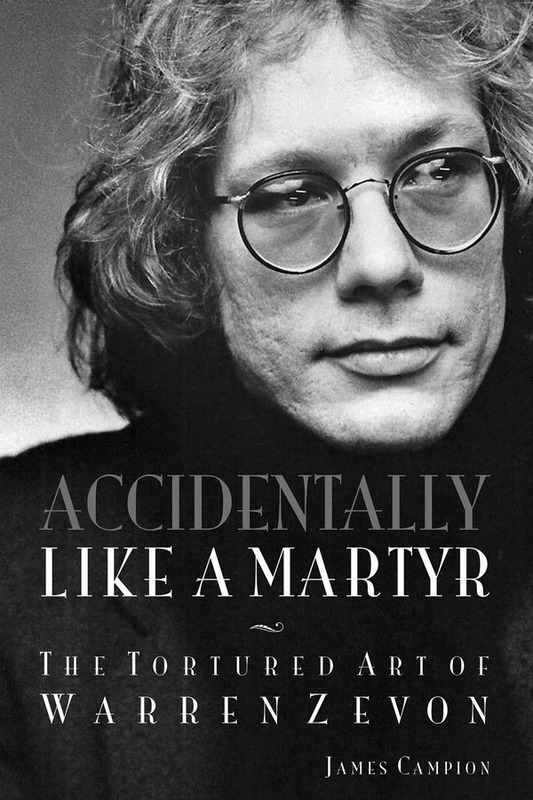
So let’s rephrase the question: What’s a proper evaluation of Zevon’s place in pop music history? He died at relatively young age of 56 on Sept. 7, 2003. This summer James Campion published his critical biography (right) , Accidentally Like a Martyr: The Tortured Art of Warren Zevon, a 290-page argument that the singer/songwriter deserves better from history than he’s gotten so far.
photo 5 bio In his gushing, heart-on-his-sleeve prose, heavy on first-person pronouns, Campion is trying to transform the standard critical take on Zevon: that the tremendous promise of his early work was left unfulfilled by his struggles with drugs, alcohol and self-aggrandizement. Campion doesn’t evade those struggles, but he argues that Zevon was able to use those challenges as the raw materials for some of his best work on his final records.
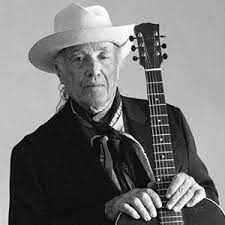
Campion has some famous musicians willing to testify on his behalf. In 2004, the posthumous tribute album ‘Enjoy Every Sandwich’—The Songs of Warren Zevon featured contributions from Bob Dylan, Bruce Springsteen, Steve Earle, Jackson Browne, Bonnie Raitt and Ry Cooder (left), often performing songs from later in the songwriter’s career. The author calls on many of them and their peers in the book to bolster his case.
In the end, though, Campion failed to persuade this reader. Zevon made one brilliant album, his 1976 breakthrough Warren Zevon, almost duplicated it on his 1978 follow-up, Excitable Boy, but never came close to such a triumph again. Individual songs stood out subsequently, but they were eclipsed by a lot of macho showboating, and the recycled musical motifs and underwhelming singing grew tiresome upon repeated listening. Zevon never lost his facility with words, but mere cleverness is not the same as great art.
Campion undermines his own argument with the examples he selects. He justifiably raves about the lyrics in “Desperadoes Under the Eaves” (“Don’t the sun look angry through the trees? Don’t the trees look like crucified thieves? Don’t you feel like desperados under the eaves? Heaven help the one who leaves…. I was sitting in the Hollywood Hawaiian Hotel; I was listening to the air conditioner hum.”). But then he later extends the same enthusiasm for the much clumsier lyrics on 2000’s “Fistful of Rain” (“You can dream the American dream, but you sleep with the lights on and wake up with a scream. You can hope against hope that nothing will change; grab a hold of that fistful of rain.”). A more objective listener can’t help but notice that compared to the first the second song suffers from generalities, clichés and lazy rhyming.
Campion devotes each chapter to a song—or sometimes an album—using that as a lens for examining a certain stage and/or a certain aspect of Zevon’s career. For example, the biographer uses “Desperadoes Under the Eaves” to examine both the events that led up to the 1976 eponymous disc and the colorful songwriting that gave the record its impact.
Then Campion backtracks in the second chapter to examine Zevon’s pre-fame career as an L.A. session musician, jingle composer, songwriter, unsuccessful recording artist and eventually music director for the Everly Brothers’ touring band. To focus this chapter, the biographer uses “Studebaker,” a romantic ballad about an unreliable car, a song that Zevon never released nor performed live during his lifetime.

Then it’s back to Warren Zevon, this time analyzed through the prism of the title track of “Poor, Poor Pitiful Me.”

This song was sung most lustrously, and also employed as an album title by Linda Ronstadt (right)
Then it’s on to Zevon’s highest-charting album, Excitable Boy, which yielded his only top-40 single, “Werewolves of London,” a song that compares bohemian hipsters out on the town to marauding canines. In his eagerness to set up his hero on the pedestal of high art, Campion pooh-poohs the single, describing it as “an albatross in miscasting him as some kind of failed one-hit wonder” and “unfit to stand beside more refined songs with introspective themes.”
And yet it still stands as Zevon’s most accessible, most pleasurable recording. It’s precisely because he didn’t take the song seriously that the singer was able to drop his pretentious posturing and artistic mannerisms and just have fun with his natural instincts for melodic hooks and irreverent satire. The fact that he never made such a carefree track again is a clue into his failure to deliver on his promise.
The title track of Excitable Boy offered a similarly hyperbolic satire of masculinity, but the chorus wasn’t as catchy and the vocal wasn’t as relaxed. And by playing the rape and murder of a junior-prom date for laughs, Zevon too easily embraces the primacy of the male id over every other consideration. This is even more obvious in his admiration for the mercenary soldier who pillages and massacres his way across the Third World in the ghost story, “Roland the Headless Thompson Gunner.” And in the braggadocio and self-entitlement of “Lawyers, Guns and Money.”
This is where biography and art intersect. Campion is frank about Zevon’s weakness for alcohol, drugs, guns and womanizing. But he discusses these matters as if they were merely obstacles getting in the way of the songwriter doing his work. The biographer never recognizes the ways that weakness seeped into the work. But anyone who has spent much time around alcoholics and gun fanatics can recognize the macho bluster, self-importance and barroom boasting that increasingly informed Zevon’s work from Excitable Boy onwards.
The singer had constructed a persona—that of a hard-drinking, gun-firing, thesaurus-toting wild man—and that character served him well in winning a following that remained loyal through the subsequent years of sporadic and uneven albums and tours. Campion is a loyalist of the first rank, and he’s willing to overlook the ways that Zevon got trapped in that role. But he did and before long, he was willing to merely evoke that guise in a song without exploring it.
His decline wasn’t sudden, and it was never complete. For all its flaws, Excitable Boy was a nearly great album, containing not only “Werewolves” but also Zevon’s most heartfelt ballad (“Accidentally like a Martyr”), his best historical evocation (“Veracruz”) and the funkiest track he ever released (“Nighttime in the Switching Yard”).
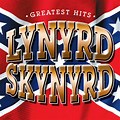
The slide began in earnest on the 1980 follow-up, Bad Luck Street in Dancing School, whose silly title track was only made sillier by its clunky chamber-music frame. The album includes the most negligible song Bruce Springsteen ever co-wrote (“Jeannie Needs a Shooter”) and the most formulaic song ever written about teen rebellion (“Wild Age”). On the other hand, the album includes “Gorilla, You’re a Desperado,” a sequel to “Werewolves” that’s even funnier than the original though not as catchy, and “Play It All Night Long,” a fitting answer song to Lynyrd Skynyrd’s “Sweet Home Alabama” and Neil Young’s “Southern Man.”
It was mostly downhill from there. Zevon did have a knack for writing good songs about athletes, such as baseball pitcher “Bill Lee,” boxer “Boom Boom Mancini” and the fictional hockey player in “Hit Somebody.” And every album seemed to have one or two flashes of the old talent.
But even when he wrote a song as promising as “Reconsider Me,” “The Indifference of Heaven,” “Splendid Isolation” or “I Was in the House when the House Burned Down,” he often undermined it with a poor performance. His pitch was unreliable, and his stiff march rhythms reinforced an unfair stereotype about white people. And the majority of his later songs were variations on the theme of complaining about his fate as a kind of macho bragging.
Campion’s is the third book about Zevon, following 2017’s academic study, Warren Zevon: Desperado of Los Angeles, by George Plasketes, and 2007’s oral history, I’ll Sleep When I’m Dead: The Dirty Life and Times of Warren Zevon, organized by ex-wife Crystal Zevon and often referred to by both Campion and Plasketes. Neither Campion nor Plasketes interviewed Warren Zevon, so his voice occupies a small place in their books.
So what is Zevon’s proper place in pop music history? He was too talented to be forgotten, and too self-sabotaging to be lionized. Warren Zevon and Excitable Boy are still worth hearing, but the other albums need to be stringently cherry-picked.

In the end, Zevon is overshadowed by two other misanthropic, piano-playing singer/songwriters who were working in Southern California at the same time he was: Randy Newman and Tom Waits, (right) both deservedly in the Rock & Roll Hall of Fame. We will shortly sharing a piece which celebrates the fiftieth anniversary of Newman´s album Sail Away. The songs of Newman are as relevant today and Waits sound timeless today, while Zevon’s sound like artifacts of a particular time and place—a Carter/Reagan-Era L.A. warped by alcohol, cocaine, gunpowder and testosterone.

Thinking of the works of Warren Zevon I can only really call to mind one album in my collection and I might not have remembered its title had I not checked. On that album there were, to my mind, three of four pretty good songs with some intriguingly twisted titles. In all my years I have never burst into song and heard the words and melodies of Zevon taking to the air. do, though, have Newman´s Rider In The Rain often on repeated play in the car and I will always have vivid memories of a night that Gary Hall (once of the Stormkeepers) and Ian Johnston (of Stampede Promotions) and I (of hangers on incorporated) spent a faux drunken half hour howling Tom Waits´ lyrics at a grapefruit moon. We might have actually been simply bolstering our bravado by Whistling Past The Graveyard as we took a short cut home through the ominously dark and deserted dockland area of Preston.
It is certainly true that wherever you look in the rock and roll hall of fame, you will find there is ´heartbreak spoken here.´! And that is one of the Warren Zevon song titles that shares its name with a book..
After his wife left him, Stephen Walsh took to the road in search of Britain’s Country and Westerners, people who speak the language of heartache. What he found was a world of quirky characters, all busting to share tales of lost love, country music and big hats, and how to find the place where broken hearts are mended. ‘…could well be Country & Western’s FEVER PITCH’ – The Independent ‘An unusual and highly original book emerges, full of genuine warmth, humour, insight and optimism’ – The Sunday Times
Another great song by Warren Zevon that lent its name to a film was Things To Do In Denver When You´re Dead.

Things to Do in Denver When You’re Dead (right) is a 1995 American crime film directed by Gary Fleder and written by Scott Rosenberg. The film features an ensemble cast that includes Andy García, Christopher Lloyd, Treat Williams, Steve Buscemi, Christopher Walken, Fairuza Balk and Gabrielle Anwar.
The film’s title comes from a Warren Zevon song of the same name, recorded on his 1991 album Mr. Bad Example, which he allowed under the condition that the song be played during the end credits. The lead character’s name, “Jimmy the Saint,” comes from the Bruce Springsteen song “Lost in the Flood” from his 1973 album Greetings from Asbury Park, N.J. The film was screened in the Un Certain Regard section at the 1995 Cannes Film Festival.
The film was a box office bomb and received negative reviews from critics, with many dismissing it as a Pulp Fiction clone.
Objectively, maybe Warren Zevon´s canon of work is not quite of the quality deserving of entry into the rock and roll hall of fame. Having said that, had all his work been of the quality of his best work he would have been a walk-in. He was, however, held in high regard by his song writing and performing peers, and seems to have conjured up phraseology that Mankind will still be uttering many years hence when even the hall of fame has crumbled. Music lovers of Zevon´s lyrics will gather at the ruins of the rock and roll hall of fame, as people do today at the sites of Ancient Greece, and will remark that, indeed, there was heartache spoken here,
“




Leave a Reply
Want to join the discussion?Feel free to contribute!